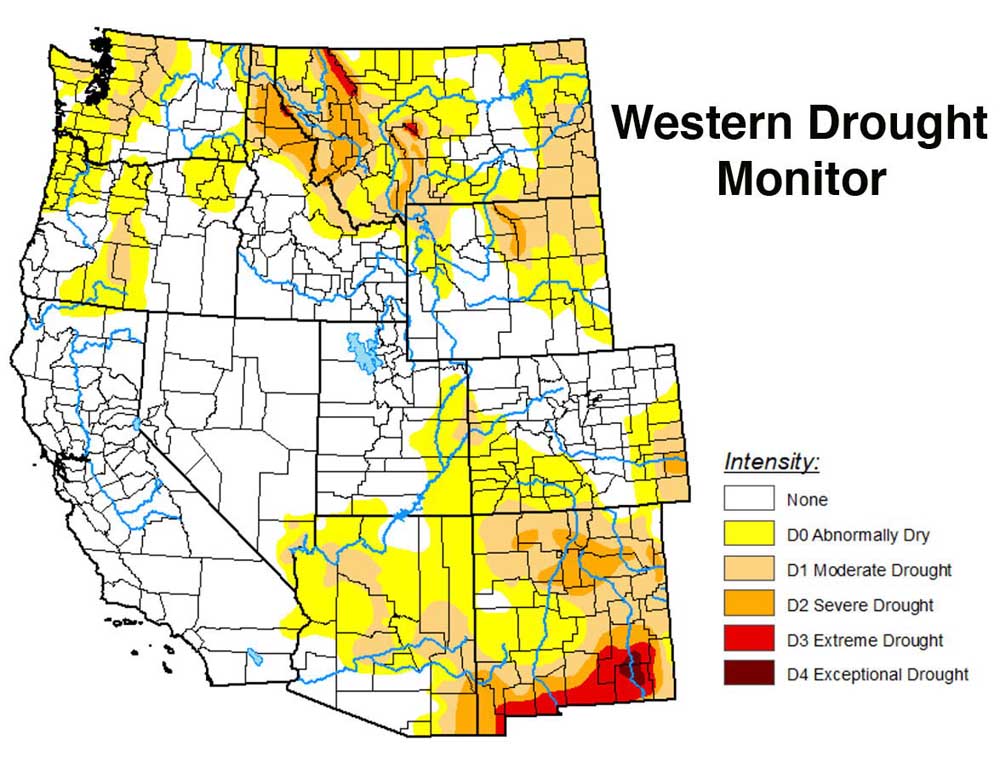Climatologists expect La Niña to return before summer ends
Published 2:15 pm Thursday, May 9, 2024

- Drought Monitor for May 9.
The surface of the Pacific Ocean along the equator is cooling and likely will continue to cool, triggering a La Niña this summer that will stay through the winter, the National Weather Service predicted May 9.
Trending
Sea-surface temperatures have been above average for almost a year, but will drop this month to near normal, ending a strong El Niño that peaked in December, according to the weather service’s Climate Prediction Center.
There is a 69% chance that between July and September seas will be cool enough for a La Niña. La Niña winters are generally cooler and wetter in the Pacific Northwest and good for irrigators.
Some stretches of the Pacific Ocean already are cooler than normal. La Niñas tends to follow strong El Niños, adding confidence to the forecast, according to the climate center.
Trending
More water south
The fading El Niño broke a string of three straight La Niña winters. It has been blamed for droughts and floods around the world because of its varying influence on global weather patterns.
Climatologists lean on sea-surface temperatures in making seasonal forecasts because warmer or cool seas cause changes in the atmosphere that shift storm tracks.
El Niños are linked to warm and dry winters in the northern tier of the U.S., including Washington and the Idaho Panhandle. Winters are generally cooler and wetter farther south.
Washington’s snowpack was only 70% of normal on May 9, according to the Natural Resources Conservation Service. The state Department of Ecology anticipates summer water shortages and has declared a drought.
Drought has gripped the Idaho Panhandle. A tiny portion of Shoshone County bordering Montana is in an “extreme” drought, the U.S. Drought Monitor reported Thursday.
Southern Idaho is drought free, as is California. In Oregon, parts of Deschutes, Crook, Lake and Klamath counties are in a “moderate” drought, making up 4% of the state.
Oregon’s snowpack was 131% of average and California’s was 130% of normal Thursday.









